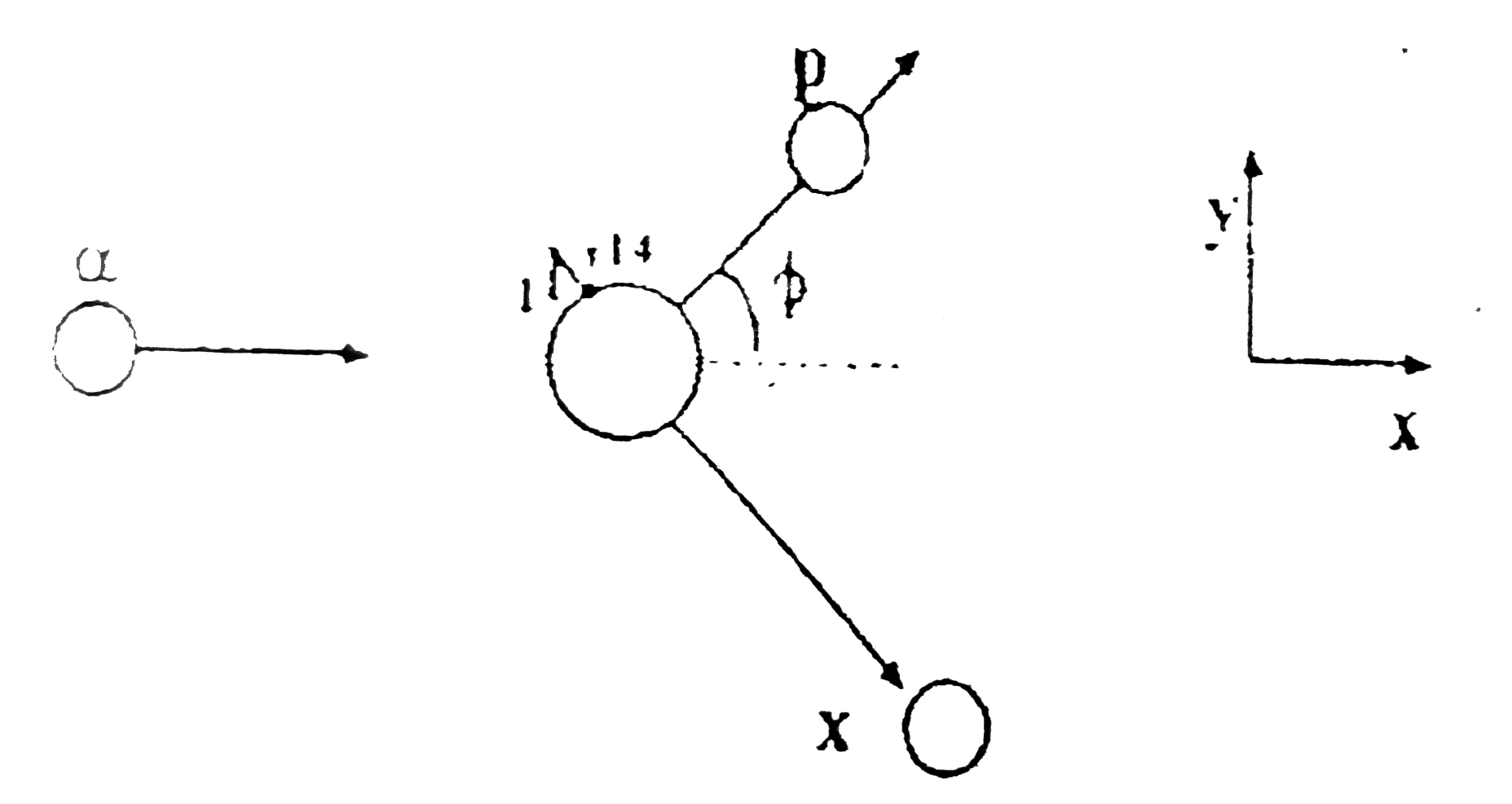In a nuclear reaction, α+7N14→X+p
When nitrogen atoms are bombarded by 7.7MeVα− particles, protons are ejected with a kinetic energy of 5.5MeV. The Q− value of the reaction is −1.26MeV
(a) Find the atomic mass of X in amu, identify the element X.
(b) Find the angle ϕ between the direction of motion of proton and α− particle.
Given the atomic mass of 1H1=1.00814a.m.u.,
atomic mass of 7N14=14.00752aμ, and atomic mass of 2He4=4.0038a.m.u.
Applying law of conservation of energy
(Eα+mαc2)+(0+mNc2)=(Epr+mprc2)+(Ex+mxc2)
where E represents the K.E.
Energy of the reaction is given by
Q=KEf=KEi=(Epr+Ex)−(Eα)=(mα+mN−mpr−mx)c2
⇒−1.26MeV=(4.00388+14.00752−1.00814−mx)×931.5MeV
On solving, we get
X=8O17
Applying conservation of linear momentum,
→pα=→px+→ppr
→pα−→ppr=→px
p2α+p2pr−2pαpprcosϕ=p2x
∴Ex−Q+Eα−Epr
∴Ex=(−1.26+7.7−5.5)MeV=0.94
∴cosϕ=−[mxEx=mαEα−mprEpr2√mαmprEαEpr]=0.4429 (∵p2=2mE)
ϕ=cos−1(0.4429)=63∘42'

Similar Questions
Knowledge Check
A proton and an alpha - particle are accelerated through same potential difference. Then, the ratio of de-Broglie wavelength of proton and alpha-particle is
A√2:1B√4:1C√6:1D√8:1
The bombarment of α - particle on 7N14, emits proton then new atom will be :
View SolutionIf an alpha particle and a proton are accelerated from rest by a potential difference of 1MeV, then the ratio of their kinetic energies will be
View SolutionIn an α -decay, the kinetic energy of α-particles is 48MeV and Q value of the reaction is 50MeV. The mass number of the mother nucleus is (assume that daughter nucleus is in ground state)
View SolutionIn an α -decay, the kinetic energy of α-particles is 48MeV and Q value of the reaction is 50MeV. The mass number of the mother nucleus is (assume that daughter nucleus is in ground state)
View SolutionIn an α -decay, the kinetic energy of α-particles is 48MeV and Q value of the reaction is 50MeV. The mass number of the mother nucleus is (assume that daughter nucleus is in ground state)
View SolutionA proton and an alpha particle is projected with equal kinetic energy in transverse uniform magnetic field B. The ratio of radii of proton to that of alpha particle is
View SolutionA proton and an alpha - particle are accelerated through same potential difference. Then, the ratio of de-Broglie wavelength of proton and alpha-particle is
View Solution
